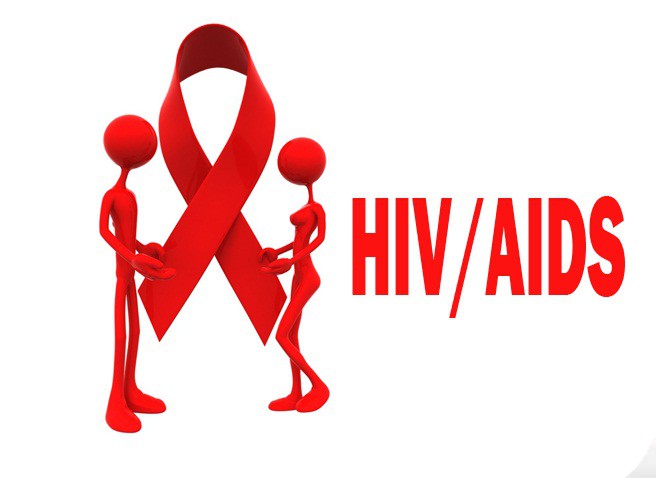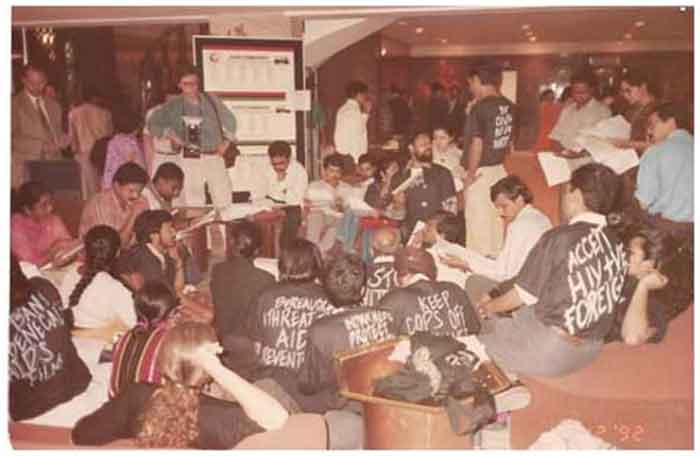
We are at an incredible moment in the history of the HIV/AIDS response, which reflected in the vibrancy of the HIV Research for Prevention (HIVR4P 2018) – the only global scientific conference focused on the fast-growing field of biomedical HIV prevention research. Today, the latest research in different areas of biomedical HIV prevention, including vaccines, rings, microbicides and other female-controlled forms of prevention, pre-exposure prophylaxis (PrEP) and long-acting delivery systems, offer the greatest promise of significantly slowing the toll of the disease.
And yet we are far away from ending the AIDS epidemic by 2030, and are also falling short of achieving the 90-90-90 UNAIDS targets by 2020.
While there has been immense progress in the field of HIV science, we are yet to see its public health impact on the ground.
“It is not just about R&D but about R&D and D – research and development, and delivery. If you take anyone of those three letters out, we fail. Each of them is equally important. Undoubtedly, it is difficult to successfully complete the clinical study for a new product, but delivering that product to the people for whom it was designed, is harder. Whether it is the ARVs, PrEP, vaginal rings, multipurpose prevention tools like the female condom, we see a huge gap in delivery”, said Mitchell Warren, Executive Director of AVAC, in an exclusive interview given to CNS onsite at the HIVR4P Conference being held in Madrid.
Every new infection of HIV could have been averted
Till to date, more than 35 million people have died of HIV-related illnesses, and another 37 million people are living with HIV worldwide. In 2017 alone there were 1.8 million new infections (87,580 in India) and 940,000 deaths (69,110 in India). Governments have promised to end AIDS by 2030.
But the new cases graph is not dipping towards that steeply enough. Why are we failing to prevent new HIV transmissions?
According to Mitchell, “We are failing for a number of reasons. One is our failure to translate science into programmes fast enough. The second is the fundamental failure of the system in which people who need prevention and treatment most are least likely to be able to access it. To bridge this wide access gap we need to do two things simultaneously. We clearly need additional prevention options. But more importantly, we need to simultaneously focus on our (delivery) systems. Countries need to build prevention programmes that respect people’s choices and needs and are capable to deliver any new prevention method. If there is anything we need to do differently, it is that we need to listen to the people who are in need of the product(s). We have to act upon what people want, when they want and how they want it. We have to listen to them in their diversity and respect their different choices. One size will never fit all. A successful HIV/AIDS response is the one that takes in all the imperfect things we have and bundles them together in the most perfect programme.”
Promoting female-initiated prevention methods
Women seem to be shortchanged as far as their own sexual and reproductive health is concerned. This is true not just in HIV prevention but for many other public health issues as well. Mitchell laments that even though sexuality is a part of human nature, people are scared to talk about sex. They are not comfortable about letting women make choices about what they want to put in their vagina.
“We want young women to have choices. But more often than not (we know this from reproductive health programmes) those choices are made by governments, by health providers and by their male partners— whether they can use an injectable contraceptive or the pill or an implant. Despite having so many wonderful family planning options, women cannot choose the one they want. Many a times their public health programme offers them just one or two choices, because those who dictate their choices are often men. So, patriarchy, coupled with moralising conservative governments, creates a complex eco system. But we need to inform people better, rather than moralise. We need to talk about the female initiated prevention options and let the product user decide for herself. In fact, all adults, irrespective of their age or sex, should be free to make informed choices about which product to use for the benefit of their own health and not be influenced by their partners, peers, parents or by the moralising politicians, health providers and clinicians”, he says.
New treatment and prevention options should not make us complacent
People know that HIV is no longer a death sentence, that they can get a pill everyday and live healthy and long, and not infect others once they have undetectable viral load. This is an empowering and important message. But if not communicated properly, it could have unintended consequences of making individuals and governments complacent that getting HIV is no big deal. Let us not forget that HIV still is a big deal. It is an epidemic. Even though we can treat it, but the more people are infected, the harder it would be to treat them all from a financial perspective. We have to stop new infections. So we got to find the right balance to not scare people, not stigmatise PLHIV, but at the same time make them realise that being HIV free is possible and is important.
Mitchell’s sane advice is to be laser sharp in our focus – not only around new technologies, but also upon the programmes and infrastructure that can deliver a whole range of products. We need to do both— technology development and building systems that address the fundamental structural barriers—in a comprehensive, integrated and sustained way. If we do one and not the other, we cannot end the AIDS epidemic. We have to create a demand for all the available effective prevention tools and make all of them available to people so that they can choose what suits their needs best. But all this has to be in an ecosystem where one can talk about sex and about prevention of HIV in a human rights based comfortable way.
(Shobha Shukla is Managing Editor of CNS (Citizen News Service) and was awarded HIV Research For Prevention Science Journalism Fellowship 2018. Follow her on Twitter @Shobha1Shukla or visit www.citizen-news.org)
- Shared under Creative Commons (CC) Attribution License












































